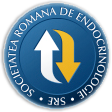
- Login
- Register
- Home/Current Issue
- About the journal
- Editorial board
- Online submission
- Instructions for authors
- Subscriptions
- Foundation Acta Endocrinologica
- Archive
- Contact
 Romanian Academy
Romanian Academy
 The Publishing House of the Romanian Academy
The Publishing House of the Romanian Academy

ACTA ENDOCRINOLOGICA (BUC)
The International Journal of Romanian Society of Endocrinology / Registered in 1938in Web of Science Master Journal List
Acta Endocrinologica(Bucharest) is live in PubMed Central
Journal Impact Factor - click here.

-
General Endocrinology
Xue JL, He L.J., Shang G.L., Zeng J.E., Sun J.Z., Dai Z., Zou R.M., Xu YC
Distribution and Role of Receptor Interaction Protein 140 in Pancreatic ß-cells in Rodents, in Vivo and in VitroActa Endo (Buc) 2014 10(1): 41-52 doi: 10.4183/aeb.2014.41
AbstractObjective. This study was to investigate RIP140 expression levels in the pancreas and islet β-cells in mice and rats and the role of RIP140 in cultured β-cells using the mouse pancreatic β-cell line MIN6. Methods. The MIN6 cell line stably overexpressing RIP140 was used. The effects of RIP140 on cell viability, cell cycle, apoptosis, insulin secretion, and its regulated genes were analyzed using flow cytometry, the MTT assay, Western blot analysis, reverse transcriptase (RT)-PCR, and enzyme-linked immunosorbent assay (ELISA). Results. Most of insulin-positive cells in islets expressed RIP140. In MIN6 cells, overexpression of RIP140 inhibited cell viability by reducing the number of cells in S phase and inhibiting proliferating cell nuclear antigen (PCNA) expression. We also found that overexpression of RIP140 inhibited Bcl-2 and mRNA expression of peroxisome proliferator-activated receptor-γ coactivator-1α (PGC-1α) and uncoupling protein 2 (UCP2) and increased levels of phosphorylated extracellular signalregulated protein kinases 1/2 (p-ERK1/2). However, apoptosis rate and levels of basal level of insulin secretion (BIS) and glucose-stimulated insulin (GSIS) were not significantly altered in MIN6 cells. Conclusions. RIP140 was expressed in the pancreas of mice and rats, particularly in β-cells, and participated in regulating β-cell function and proliferation. -
General Endocrinology
Siderova M, Hristozov K., Krasnaliev I., Softova E., Boeva E
Application of immunohistochemical markers in the differential diagnosis of thyroid tumorsActa Endo (Buc) 2013 9(1): 41-51 doi: 10.4183/aeb.2013.41
AbstractAim. To evaluate the expression of Galectin-3, Fibronectin-1, Cytokeratin-19 and HBME1 in benign and malignant thyroid nodules and to assess their diagnostic value. Methods. Immunohistochemical analysis was performed on 59 surgically removed thyroid nodules, including 34 carcinomas (12 papillary, 2 tall cell variants, 3 lymph node metastases from papillary carcinoma, 5 follicular variants of papillary carcinoma (FVPTC), 3 anaplastic, 5 follicular and 4 Hürthle cell carcinomas), as well as 25 benign lesions (10 follicular adenomas, 4 Hürthle cell adenomas, 11 nodular goiters with surrounding normal thyroid tissue).3 expression in all malignant lesions except for one case of FVPTC and one follicular carcinoma. Normal thyrocytes and the majority of the benign lesions were negative for all markers. Statistical analysis of each protein confirmed that Galectin-3 was the most sensitive (94%), followed by Cytokeratin-19 (88%). Fibronectin-1 and HBME1 proved to be less sensitive (56% and 68%, respectively), but more specific (92% specificity for each of them). Coexpression of two or more proteins was restricted to carcinomas, while their concurrent absence was highly specific for benign lesions. Comparing the immunopositivity in follicular carcinoma versus adenoma we achieved 80% sensitivity for Galectin-3 and 100% specificity for HBME1. For distinguishing the Hürthle cell lesions, Fibronectin-1 turned out to be more sensitive than Galectin-3 and Cytokeratin- 19. Conclusion. Our findings suggest that immunohistochemical panel consisting of Galectin-3, Cytokeratin-19, HBME1 and Fibronectin-1 might contribute to differential diagnosis between malignant and benign thyroid nodules, including those with follicular architecture. -
Endocrine Care
Scânteie CL, Leucuta DC , Ghervan CM
Quality of Life in Patients with Acromegaly – a Romanian Single Center Cross-Sectional StudyActa Endo (Buc) 2021 17(1): 42-50 doi: 10.4183/aeb.2021.42
AbstractContext. Acromegaly, a severe condition characterized by excessive and unmodulated secretion of growth hormone, leads to morphologic disturbances and multisystem complications. Objective. The purpose of this study was to evaluate the quality of life (QOL) in patients with acromegaly compared to matched obese patients. Design. This was an observational cross-sectional study. Subjects and methods. We enrolled 49 patients with acromegaly and 49 obese patients. AcroQoL (acromegaly QoL questionnaire) was applied to all patients and IGF-1 (type 1 insulin-like growth factor 1) was measured. Results. Patients with acromegaly had a worse QoL compared to patients with obesity (score= 77(53-86) vs. 96(90- 102), p˂0.001). In the group of patients with acromegaly, there was no difference in the QoL regarding the activity of the disease (active, controlled, or cured). Men had a higher AcroQoL score than women (score= 88(55-95) vs. 74(52.75- 82), p=0.02), but there was no difference between patients with microadenomas and the ones with macroadenomas (score= 82(66-88.5) vs. 73(55-83), p=0.136). The most frequent complications were cardiovascular complications (81.63%), articular complications (73.46%), dyslipidemia (65.30%) and digestive complications (63.26%). Conclusions. Despite complex treatment and hormonal control, the presence of complications reduces the quality of life in patients with acromegaly, even when compared with obese patients. -
Endocrine Care
Shao HJ, Li J, He XQ, Liu N, Li YH, Yan JJ, Qu XL, Yuan XY
Prevalence of Nontoxic Nodular Goiter After a Nearly Two-Decade Universal Salt Iodization in a Littoral Region of Shandong Province, ChinaActa Endo (Buc) 2016 12(1): 43-46 doi: 10.4183/aeb.2016.43
AbstractIntroduction. With the introduction of iodized salt, more and more people are exposed to iodine sufficiency in some regions. The purpose of this study was to investigate the prevalence of nontoxic nodular goiter (NTNG) in the littoral region with high iodine supply after a nearly twodecade universal salt iodization. Subjects and Methods. Eight hundred and thirtyfive participants (from 25~65 years; males 421 and females 414) were invited for the study from Huan-cui District of Weihai City, Shandong Province from January 2013 to September 2014. All participants were inspected and diagnosed by endocrinologists according to the thyroid function tests and the thyroid gland imaging. After the normal diet of three days, the urine samples of the participants were collected between 8:00AM and 9:00AM and the urinary iodine (UI) concentrations were analyzed using Urinary Iodide Test Kit. Results. The overall prevalence of NTNG in the region was 40.1%, and different prevalence occurred in the different age ranges (p<0.01). The prevalence of NTNG was 32.51%, 37.44%, 49.70%, 58.57 and 74.77% in the age group of ≤ 30, 31-40, 41-50, 51-60 and >60 years, respectively. Meanwhile, the prevalence of NTNG in women (42.08%) was higher than that in men (34.29%, p<0.05). The median of UI concentrations were 139.4μg/L and 101.5μg/L for the group with NTNG and without NTNG, respectively (p<0.01). However, there was no significant difference in UI concentrations among the groups with different age ranges (p>0.05), and statistical difference was not observed for UI concentrations between women and men (p>0.05). Intriguingly, higher UI concentrations were found in the group with larger thyroid size (p<0.01). Conclusion. The iodine excess can lead to the high occurrence of nodular goiter in the littoral region, and individual UI concentration detection is recommended for the iodine nutritional status analysis among normal people when Universal Salt Iodization (USI) continues to be implemented in the region. -
Endocrine Care
Moldovan D, Rusu C, Patiu I, Racasan S, Orasan R, Kacso I, Brumboiu I, Bondor C, Gherman-Caprioara M
Could the serum parathormone be a predictive marker for peripheral vascular calcifications in chronic dialysis patients? Experience of a single center in TransylvaniaActa Endo (Buc) 2010 6(1): 43-55 doi: 10.4183/aeb.2010.43
AbstractBackground. Vascular calcifications (VCs) represent an important complication in dialysis patients. It is still a subject of debate whether VCs are associated with low or high intact parathormone (iPTH), or if it is not any relation.\r\nThe purpose of this study was to assess the predictive value of iPTH and other mineral markers for VCs development.\r\nMethods. The study evaluated peripheral VCs in haemodialysis (HD) and peritoneal dialysis (PD) patients using radiographies. We counted a semiquantitative score ranging from 0 to 8. Each category was divided into two groups according to VCs score. We assessed the relationship between the VCs score and mineral markers.\r\nResults. A VC score=2 was positively associated with male gender, serum Ca, P, CaxP, ALP and iPTH levels in HD patients. There was no correlation with age, HD vintage, received treatment. In PD patients, did CaxP have a higher significance with VC score>/2; were iPTH, CaxP and P of higher significance for a score=5.\r\nConclusions. Hyperparathyroidism can be considered a predictor for VCs development in dialysis patients. Other risk factors are increased serum Ca, P, CaxP and ALP levels. In PD patients, high iPTH could predict VCs only for severe calcifications, but the CaxP could even predict for less extended VCs. -
Endocrine Care
Coculescu M, Anghel R, Badiu C, Caragheorgheopol A, Hortopan D, Dumitrascu A, Virtej I, Trifanescu R, Capatana C, Voicu D
Additional effects of radiotherapy to dopamine agonists in the treatment of macroprolactinomasActa Endo (Buc) 2005 1(1): 43-59 doi: 10.4183/aeb.2005.43
Abstract ReferencesINTRODUCTION: The aim of our study was to evaluate the cure rate of macroprolactinomas treated for a long term (> 4 years) or a short term (<4 years) with dopamine agonists (DA) alone or combined with radiotherapy (RT). Sometimes pituitary\r\nsurgery was performed.\r\nMATERIAL AND METHODS: We performed a retrospective study in 111 patients with macroprolactinomas, hospitalized in the Institute of Endocrinology, Bucharest, between 1978-2005. There were two groups, according to the length of DA therapy: group\r\nA =41 patients, treated more than 4 years and group B =70 patients, treated less than 4 years. Overall, 25 patients underwent additional radiotherapy, 13 in group A and 12 in group B. 28 patients were submitted to pituitary surgery, 9 in group A and 19 in group B.\r\nRESULTS: The cure rate (i.e. normalization of prolactin=PRL level and absence or minimal residual tumor mass, stable minimum 2 years after DA withdrawal) was 5/41 (12.1%) in group A and none in group B. 48 out of 111 patients achieved significant improvement (serum prolactin level less than 20 ng/ml and tumor shrinkage more than 50%) during DA therapy, but not after DA withdrawal: 17/41patients (41.5%) in group A and in 31/70 patients (44.3%) in group B, p=NS. Radiotherapy produced an additional improvement: in serum PRL levels only in group A, in 4/13 patients- 2/8 patients responsive to DA therapy and 2/5 patients resistant to DA therapy. In group B, the 3 patients resistant to DA submitted to radiotherapy were evaluated before the interval necessary for maximal effect of radiotherapy, but in 4/9 patients responsive to DA, we noticed further reduction in tumor volume, 2/4 progressing from mild to significant tumor shrinkage and ? progressing from no shrinkage to mild shrinkage. After radiotherapy, the medium prolactin level was 5.1 ng/ml in 10 patients from both groups on low bromocriptine (BRC) dose (7.5 mg/day), significantly less than in patients without radiotherapy, i.e. than in 19 patients from group A (serum PRL 49.5 ng/ml, p=0.02) and in 29 patients from group B (serum PRL 30.3 ng/ml, p=0.01). So, the daily BRC dose could safely decrease from 30 mg/day to 7.5 mg/day in those patients previously submitted to radiotherapy. Among 23 patients resistant to initial DA treatment, only 8 patients were submitted to radiotherapy, 2 became responsive to DA thereafter and 2 others obtained a significant decrease of prolactin levels.\r\nCONCLUSIONS: The overall cure rate is quite low in prolactinomas and it was noticed only after long-term treatment with dopamine agonists; it was improved up to 12.1% by the additional high voltage radiotherapy, useful even in DA resistant cases. The addition of radiotherapy is indicated for the cure of most prolactinomas.1. Coculescu M, Simionescu N, Oprescu M, Alessandrescu D. Bromocriptine treatment of pituitary adenomas. Evaluation of withdrawal effect. Revue Roumaine Med Endocrinol 1982; 21:157-168.2. Molitch M. Prolactinoma. In: Melmed S, editor. The pituitary. Toronto, New York: Blackwell Publishing, 2002: 455-495.3. Thorner MO, Perryman RL, Rogol AD, Conway BP, MacLeod RM, Login IS et al. Rapid changes of prolactinoma volume after withdrawal and reinstitution of bromocriptine. J Clin Endocrinol Metab 1981; 53(3):480-483. [CrossRef]4. Colao A, di Sarno A, Landi ML, Cirillo S, Sarnacchiaro F, Facciolli G et al. Long-term and lowdose treatment with cabergoline induces macroprolactinoma shrinkage. J Clin Endocrinol Metab 1997; 82(11):3574-3579. [CrossRef]5. Coculescu M, Hudita D, Gussi I, Gheorghiu M, Hortopan D, Caragheorgheopol A. Tumor size changes in prolactinomas treated with minimum bromocriptine throughout gestation. Gynecological Endocrinology 2000; 14(suppl 2).6. Badiu C, Ham J, Carnu R, Coculescu M. TRH synthesis in ?mute? thyrotropinomas: cause-effect or coincidence? J Cell Mol Med 2001; 5(1):88-91. [CrossRef]7. Coculescu M. Neuroendocrinologie clinica. Bucuresti: Editura Stiintifica si Enciclopedica, 1986.8. Colao A, di Sarno A, Cappabianca P, di Somma C, Pivonello R, Lombardi G. Withdrawal of longterm cabergoline therapy for tumoral and nontumoral hyperprolactinemia. N Engl J Med 2003; 349(21):2023-2033. [CrossRef]9. Molitch ME. Dopamine resistance of prolactinomas. Pituitary 2003; 6(1):19-27. [CrossRef]10. Molitch ME. Medical management of prolactin-secreting pituitary adenomas. Pituitary 2002; 5(2):55-65. [CrossRef]11. di Sarno A, Landi ML, Cappabianca P, Di Salle F, Rossi FW, Pivonello R et al. Resistance to cabergoline as compared with bromocriptine in hyperprolactinemia: prevalence, clinical definition, and therapeutic strategy. J Clin Endocrinol Metab 2001; 86(11) [CrossRef]12. Losa M, Mortini P, Barzaghi R, Gioia L, Giovanelli M. Surgical treatment of prolactin-secreting pituitary adenomas: early results and long-term outcome. J Clin Endocrinol Metab 2002; 87(7):3180- 3186. [CrossRef]13. Acquati S, Pizzocaro A, Tomei G, Giovanelli M, Libe R, Faglia G et al. A comparative evaluation of effectiveness of medical and surgical therapy in patients with macroprolactinoma. J Neurosurg Sci 2001; 45(2):65-69.14. Bevan JS, Webster J, Burke CW, Scanlon MF. Dopamine agonists and pituitary tumor shrinkage. Endocr Rev 1992; 13(2):220-240.15. Passos VQ, Souza JJ, Musolino NR, Bronstein MD. Long-term follow-up of prolactinomas: normoprolactinemia after bromocriptine withdrawal. J Clin Endocrinol Metab 2002; 87(8):3578-3582. [CrossRef]16. Sobrinho LG, Nunes MC, Santos MA, Mauricio JC. Radiological evidence for regression of prolactinoma after treatment with bromocriptine. Lancet 1978; 2(8083):257-258. [CrossRef]17. McGregor AM, Scanlon MF, Hall K, Cook DB, Hall R. Reduction in size of a pituitary tumor by bromocriptine therapy. N Engl J Med 1979; 300(6):291-293. [CrossRef]18. Orrego JJ, Chandler WF, Barkan AL. Rapid re-expansion of a macroprolactinoma after early discontinuation of bromocriptine. Pituitary 2000; 3(3):189-192. [CrossRef]19. Gen M, Uozumi T, Ohta M, Ito A, Kajiwara H, Mori S. Necrotic changes in prolactinomas after long term administration of bromocriptine. J Clin Endocrinol Metab 1984; 59(3):463-470. [CrossRef]20. Colao A, di Sarno A, Landi ML, Scavuzzo F, Cappabianca P, Pivonello R et al. Macroprolactinoma shrinkage during cabergoline treatment is greater in naive patients than in patients pretreated with other dopamine agonists: a prospective study in 110 patie [CrossRef]21. Delgrange E, Maiter D, Donckier J. Effects of the dopamine agonist cabergoline in patients with prolactinoma intolerant or resistant to bromocriptine. Eur J Endocrinol 1996; 134(4):454-456. [CrossRef]22. Webster J, Piscitelli G, Polli A, Ferrari CI, Ismail I, Scanlon MF. A comparison of cabergoline and bromocriptine in the treatment of hyperprolactinemic amenorrhea. Cabergoline Comparative Study Group. N Engl J Med 1994; 331(14):904-909. [CrossRef]23. Colao A, di Sarno A, Sarnacchiaro F, Ferone D, Di Renzo G, Merola B et al. Prolactinomas resistant to standard dopamine agonists respond to chronic cabergoline treatment. J Clin Endocrinol Metab 1997; 82(3):876-883. [CrossRef]24. Saveanu A, Morange-Ramos I, Gunz G, Dufour H, Enjalbert A, Jaquet P. A luteinizing hormonealpha- subunit- and prolactin-secreting pituitary adenoma responsive to somatostatin analogs: in vivo and in vitro studies. Eur J Endocrinol 2001; 145(1):35-41. [CrossRef]25. Ma W, Ikeda H, Yoshimoto T. Clinicopathologic study of 123 cases of prolactin-secreting pituitary adenomas with special reference to multihormone production and clonality of the adenomas. Cancer 2002; 95(2):258-266. [CrossRef]26. Senovilla L, Nunez L, de Campos JM, de Luis DA, Romero E, Sanchez A et al. Multifunctional cells in human pituitary adenomas: implications for paradoxical secretion and tumorigenesis. J Clin Endocrinol Metab 2004; 89(9):4545-4552. [CrossRef]27. Mignot M, Skinner DC. Colocalization of GH, TSH and prolactin, but not ACTH, with betaLHimmunoreactivity: evidence for pluripotential cells in the ovine pituitary. Cell Tissue Res 2005; 319(3):413-421. [CrossRef]28. Pellegrini I, Rasolonjanahary R, Gunz G, Bertrand P, Delivet S, Jedynak CP et al. Resistance to bromocriptine in prolactinomas. J Clin Endocrinol Metab 1989; 69(3):500-509. [CrossRef]29. Trouillas J, Chevallier P, Remy C, Rajas F, Cohen R, Calle A et al. Differential actions of the dopamine agonist bromocriptine on growth of SMtTW tumors exhibiting a prolactin and/or a somatotroph cell phenotype: relation to dopamine D2 receptor expressi [CrossRef]30. Jaquet P, Ouafik L, Saveanu A, Gunz G, Fina F, Dufour H et al. Quantitative and functional expression of somatostatin receptor subtypes in human prolactinomas. J Clin Endocrinol Metab 1999; 84(9):3268-3276. [CrossRef]31. Caccavelli L, Morange-Ramos I, Kordon C, Jaquet P, Enjalbert A. Alteration of G alpha subunits mRNA levels in bromocriptine resistant prolactinomas. J Neuroendocrinol 1996; 8(10):737-746. [CrossRef]32. Trifanescu R, Karavitaki N, Coculescu M, Turner HE, Wass JAH. What is the final outcome in patients with macroprolactinoma resistant to dopamine agonists? 24th Joint Meeting of the British Endocrine Societies, 4-6 April 2005, Harrogate, U.K, Endocrine A -
Endocrine Care
Cerghizan A, Amorin P, Catrinoiu D, Creteanu G, Adamescu E, Moise M
Efficacy and Safety of Basal Insulin Therapy in Romanian Patients with Type 2 Diabetes in Real-Life Settings: a Sub-Group Analysis of Dune StudyActa Endo (Buc) 2020 16(1): 43-48 doi: 10.4183/aeb.2020.43
AbstractContext. Despite the available evidence showing the vital role of glycemic control in the management of type 2 diabetes, a significant proportion of patients are not achieving a good glycemic control. Objective. Here we present the results of the Diabetes Unmet Need with basal insulin Evaluation (DUNE) study for patients enrolled in Romanian centers with the aim to describe the proportion of participants who achieved individualized HbA1c targets at 12 weeks following basal insulin therapy initiation. Design. Prospective, observational study. Subjects and Methods. 355 consecutive adults with type 2 diabetes, who were newly initiated with basal insulin therapy (Newly initiated group) or had been treated for less than 12 months with basal insulin prior to study enrollment (Previously initiated group) were enrolled and followed for 12 weeks. Results. The individualized HbA1c target was achieved by 22.7% of the patients in the Newly initiated group and by 25.0% of the patients in the Previously initiated group. During the study period, in the Newly initiated group mean basal insulin dose increased from 16.2 U at baseline to 27.6 U at 12 weeks. In the Previously initiated group, the insulin dose increased from 27.4 U at baseline to 33.1 U at 12 weeks. In both groups, 9.7% and 12.8% of the patients reported at least 1 episode of symptomatic hypoglycemia. Conclusions. In real-world settings, despite insulin initiation a large number of patients fail to achieve their individualized glycemic targets. One of the reasons appeared to be linked to the insufficient basal insulin titration. -
Endocrine Care
Aslan A, Sancak S, Aslan M, Ayaz E, Inan I, Ozkanli SS, Alimoglu O, Yikilmaz A
Diagnostic Value of Duplex Doppler Ultrasound Parameters in Papillary Thyroid CarcinomaActa Endo (Buc) 2018 14(1): 43-48 doi: 10.4183/aeb.2018.43
AbstractContext. Papillary thyroid carcinoma (PTC) is the most common type of thyroid cancer due to its high fibrotic content; it can affect the blood flow resistance. Objective. To introduce duplex Doppler ultrasonography (DDUS) parameters of papillary thyroid carcinoma (PTC) and their correlation with size. Design. The study was designed as a prospective study. Subjects and Methods. Thyroid nodules of the patients who were already scheduled for thyroid surgery either for malignant thyroid nodules or multinodular goiter were evaluated for DDUS parameters. Size, systolic to diastolic flow velocity (S/D) ratio, pulsatility index (PI), and resistive index (RI) of each nodule were recorded. Nodules were diagnosed as PTC or benign nodules based on histopathology. DDUS parameters were compared between PTCs versus benign nodules and micro PTCs (≤ 10 mm) versus large PTCs (> 10 mm). A correlation analysis was performed between the size and DDUS parameters. Results. 140 thyroid nodules (30 PTCs, 110 benign nodules) were obtained. The mean S/D ratio, PI, and RI values were significantly higher in PTC than in benign nodules (p values were 0.0001, 0.0003, and 0.0001 respectively). The optimal cut-off values of S/D (0.732), PI (0.732), and RI (0.738) had accuracy rates of 71%, 69%, and 69%, respectively. There was no statistically significant difference between micro PTC and large PTC with regards to DDUS parameters. The size and DDUS parameters of PTC showed no significant correlation. Conclusions. PTC has a high resistive flow pattern regardless of its size; however the clinical utility of DDUS to differentiate a PTC from benign nodule is limited. -
Endocrine Care
Gheorghiu ML, Galoiu S, Caragheorgheopol A, Coculescu M
Limits of dexamethasone supression tests in the diagnosis of Cushing's syndromeActa Endo (Buc) 2006 2(1): 45-61 doi: 10.4183/aeb.2006.45
AbstractIntroduction: The dexamethasone suppression tests (DST) in the diagnosis of Cushing's syndrome (CS) give frequently equivocal results. Our study evaluated the precision of DST in the diagnosis of CS. Patients and methods: 223 patients (15 - 77 years, 130 F / 93 M) were studied for putative CS by morning and midnight serum cortisol, urinary free cortisol (UFC) and 17 hydroxycorticosteroids (17OHCS) levels at baseline and after DST as follows: 1 mg overnight (oDST), 0.5mg q.d., 2 days (LDDST) and 2 mg q.d. 2 days (HDDST). Since not all cases were evaluated by all tests, statistical analysis used available results. Results: 79 patients had CS (47 pituitary, 3 ectopic, 21 adrenal adenoma and 8 adrenal carcinoma), 45 had adrenal tumor without all the criteria for CS (NCT) and 99 were controls. All patients with CS had abnormal cortisol biorhythm, but also 31.8% patients with NCT and 50% evaluated controls. The best basal screening test for CS is UFC, with a cut-off value of 100 g/24 h. For DST with a serum cortisol cutoff level (CCL) of 5 ?g/dl, oDST correctly diagnosed all CS, while lowering the CCL at 1.8 ?g/dl increased the false positive rate to 6.8%. At LDDST, the serum CCL of 5 ?g/dl correctly identified all patients with CS, but was 2.5 % false positive in controls. A significant correlation of serum cortisol values after oDST or LDDST with basal 17OHCS and UFC was found (r=0.6, p<0.001), suggesting that patients with mild CS are more prone to test as false negatives. The classical criterion of 50% suppression for UFC after LDDST correctly identified 12/14 CS patients and all 8 controls. Better sensitivity (Sn) had an UFC cutoff level of 10?g/24h, p<0.001. A 50% suppression of 17OHCS identified 45/61 CS patients and excluded the disease in 30/37 patients. In HDDST, serum cortisol suppression by > 50% diagnosed Cushing's disease (CD) with 85 % Sn and 57% specificity (Sp). The best HDDST accuracy had UFC (83%), with 27% false negative results (3/11 patients) for a cut-off value of\r\n50% from baseline. 17OHCS were suppressed by 50% in 19/35 patients with CD (54%) and in 3/33 (9%) patients with other causes of CS. NCT patients had higher basal values of UFC and 17OHCS than controls (p<0.01) and up to 50% had an abnormal biorhythm, suggesting a degree of hypercortisolism, with an inadequate oDST or LDDST . Therefore, only 6/45 NCT fulfilled the criteria for subclinical CS.\r\nConclusion: The best screening test was oDST (100% Sn and Sp), followed by UFC (100% Sn and 92% Sp). LDDST with serum CCL at 5 ?g/dl had 100% Sn and 97% Sp. HDDST identified CD by UFC with 73% Sn and 92% Sp and by serum cortisol with 85% Sn and 57% Sp. For NCT, the standard tests identified SCS in 13%. However, a thorough evaluation including multiple tests should be undertaken for the positive and differential diagnosis of Cushing's syndrome. -
Endocrine Care
Raducanu-Lichiardopol C, Militaru C, Florescu C, Bataiosu C
Echocardiographic features of Turner subjects without cardiovascular disordersActa Endo (Buc) 2007 3(1): 45-54 doi: 10.4183/aeb.2007.45
AbstractCardiovascular disorders represented by congenital malformations, hypertension, aortic dilatation which can emerge in dissection or rupture and ischemic heart disease are common in Turner syndrome (TS) and life-threatening. Echocardiography and magnetic resonance imaging represent complementary diagnostic methods used to assess cardiovascular status. Unfortunately, normal reference ranges for cardiac and aortic measurements are established only in unselected TS patients, preventing a delineation between patients with and without cardiovascular pathology. We performed echocardiography in 15 patients with TS, aged 12-33 years (mean 21.8 years, standard deviation 6.37 years) without cardiovascular and renal malformations, hypertension or aortic dilatation and 30 normal controls; karyotype was 45,XO in 11 patients and 45,XO/46,XX in four patients. To minimize the influence of body size, ratios of aortic and cardiac chambers dimensions were calculated. As expected, we found smaller dimensions in TS versus controls but only the ascending aorta, left atrium and diastolic left ventricular diameters and the ratio diastolic / systolic left ventricular diameters reached statistical significance. Only aortic dimensions were entirely independent of age, height, weight and BMI with a 95% confidence interval of 14.28 – 25.32 (mean 19.8) mm for the aorta at the annulus and 95% CI 21.42 – 29.36 (mean 25.54) mm for the ascending aorta. The ratios ascending aorta/ systolic left ventricular diameter (95% confidence interval 0.54 – 1.34; mean 0.94), aorta at the annulus/systolic left ventricular diameter (95% CI 0.44 – 0.92; mean 0.68) and aorta at the annulus/ diastolic left ventricular diameter (95% CI 0.36 – 0.61; mean 0.49) are independent of age, height, weight and can also be reliable for detection of aortic dilatation.